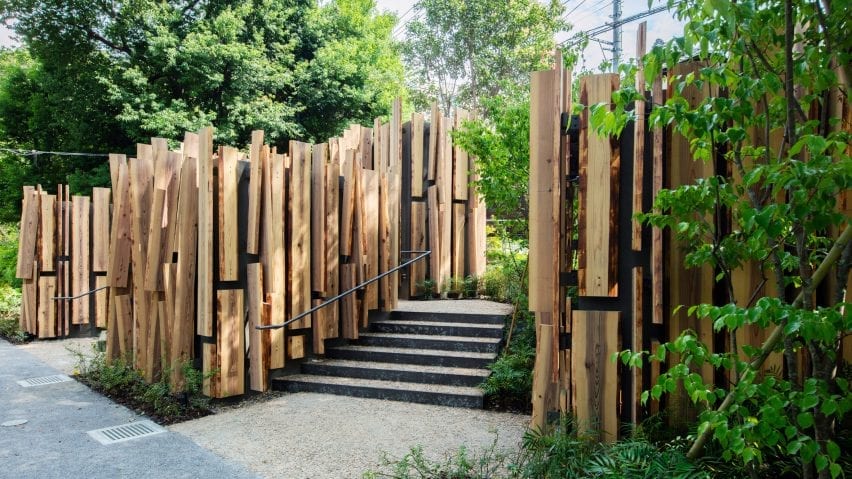
Explore all 17 Tokyo Toilet projects featured in Wim Wenders' film Perfect Days
Designed by architects including Tadao Ando and Kengo Kuma, the Tokyo Toilet project forms the backdrop for the Oscar-nominated film Perfect Days. Here, Dezeen rounds up all 17 facilities.
The Tokyo Toilet project brings together 17 public toilets in the city's Shibuya district, created by architects and designers over the past six years.
Commissioned by The Nippon Foundation as "a symbol of Japan's world-renowned hospitality culture", the unique facilities are now the subject of Perfect Days, an Oscar-nominated film by German filmmaker Wim Wenders that follows the daily life of a local janitor who cleans the toilets – played by Kōji Yakusho.
Following the movie's release and in the run-up to the 2024 Oscars ceremony on 10 March, Dezeen has rounded up all 17 of the Tokyo Toilets, which their designers say were created with safety, cleanliness and inclusivity in mind.
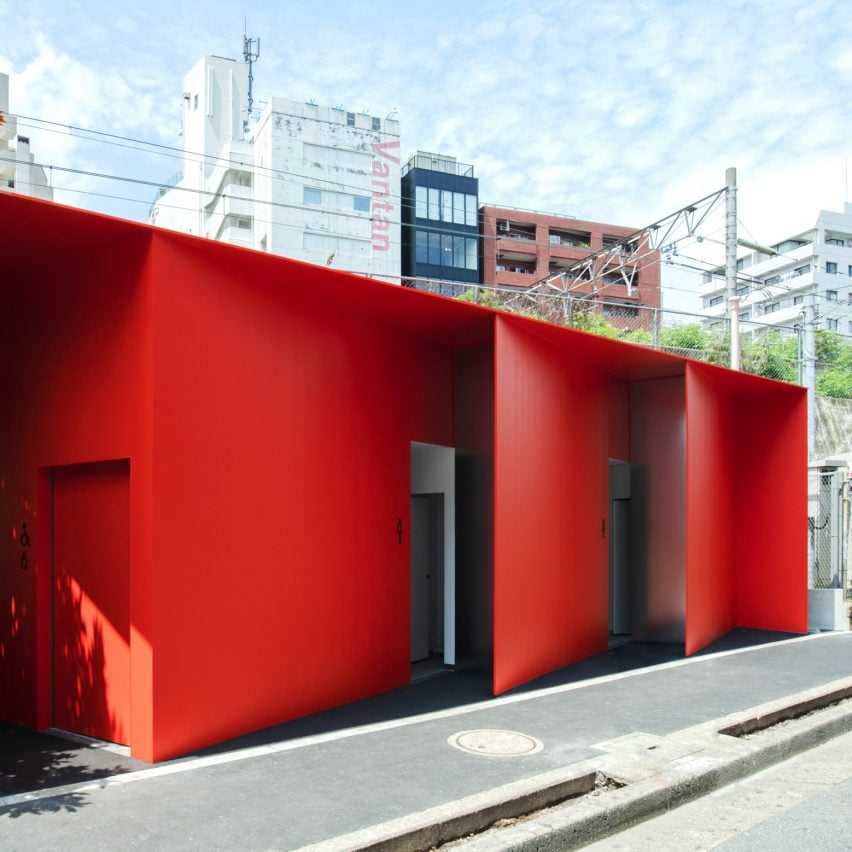
Toilet, Higashi Sanchome, by Nao Tamura
Designer Nao Tamura took cues from Origata – the traditional Japanese gift-wrapping method and a nod to hospitality – when creating this red public toilet on a triangular plot in the city's Higashi Sanchome area.
The structure, which launched the Tokyo Toilet project, features a wheelchair-accessible bathroom and separate male and female toilets.
Tamura used bright red for the metal shell to make the block visible and project a "sense of urgency".
Find out more about this toilet ›
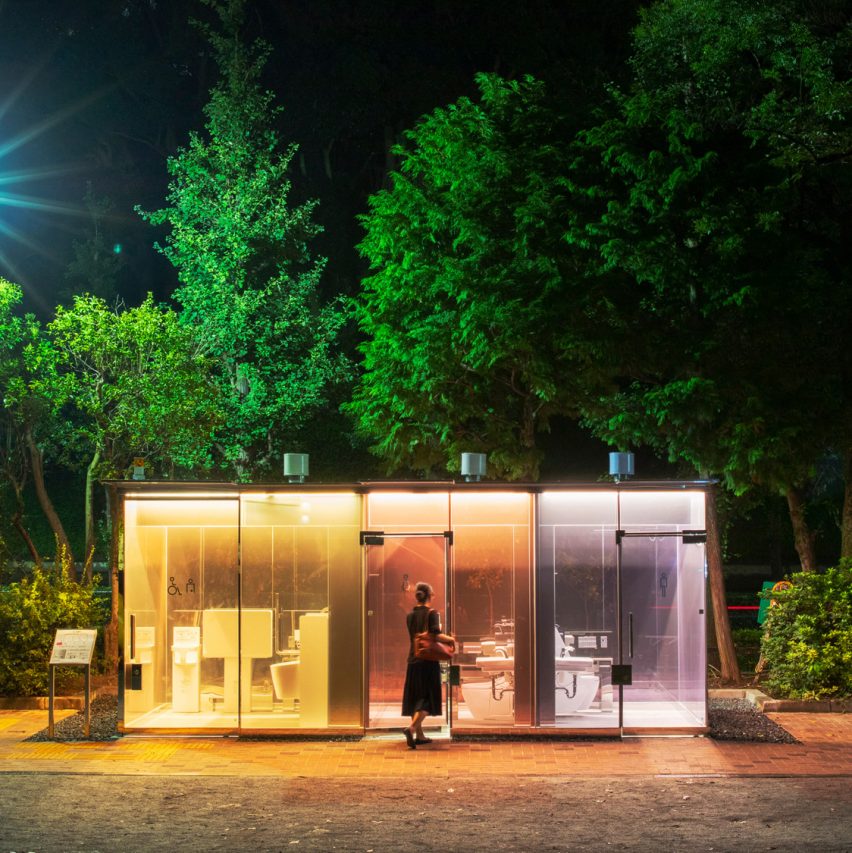
Toilet, Yoyogi Fukamachi Mini Park, by Shigeru Ban
Pritzker Prize-winning architect Shigeru Ban designed a pair of coloured glass toilets with transparent walls to enable those approaching to check whether they are in use.
When occupied, the toilets' tinted facades become opaque for privacy. One of the rectilinear structures was clad in shades of orange, pink and purple and is located in the city's Yoyogi Fukamachi Mini Park.
Find out more about this toilet ›
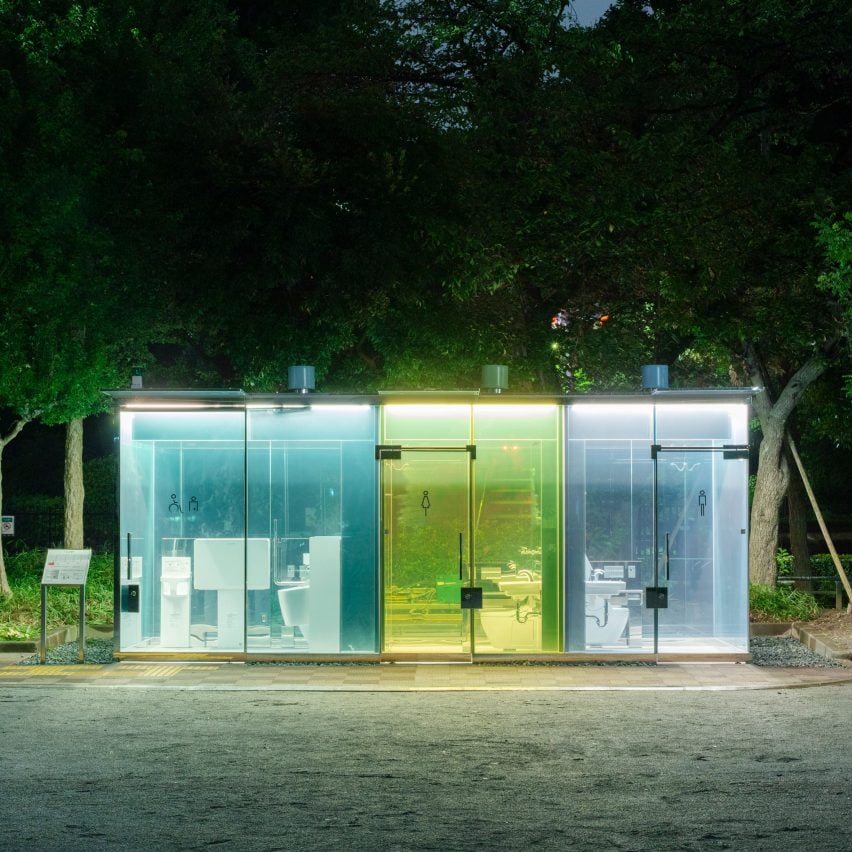
Toilet, Haru-no-Ogawa Community Park, by Shigeru Ban
Ban's second toilet is located a short walk from the first in the Haru-no-Ogawa Community Park, but features blue and green walls to complement the surrounding trees.
Each facility includes three separate cubicles – a male, female and accessible toilet – which were divided by mirrored walls.
Find out more about this toilet ›
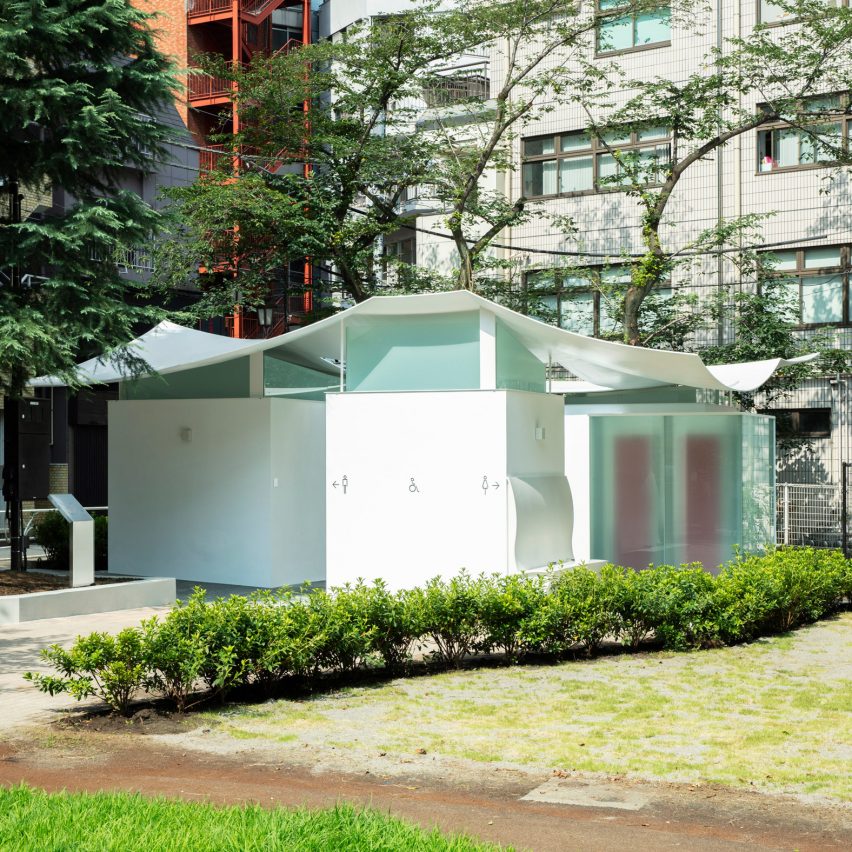
Squid Toilet, Ebisu East Park, by Fumihiko Maki
Dubbed "Squid Toilet", this public restroom was designed by Pritzker Prize-winning architect Fumihiko Maki.
The four-volume structure was built to be used as a place for people to rest as well as a toilet and features a compact courtyard at its centre, which is shaded by a thin, curved white roof.
Located in Ebisu East Park – known as "Octopus Park" for its octopus-shaped red slide – the toilet was created to emphasise the area's existing playfulness.
Find out more about Squid Toilet ›
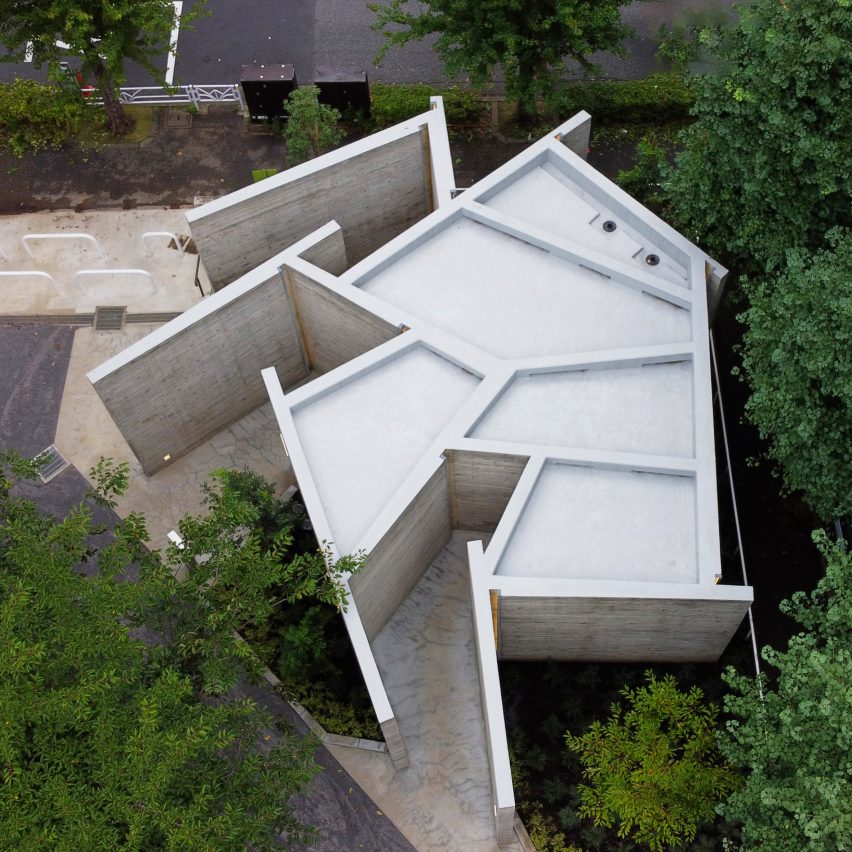
Modern Kawaya, Ebisu Park, by Wonderwall
Prehistoric Japanese huts served as the starting point for this public toilet in Ebisu Park, created by interior design studio Wonderwall.
A maze of 15 board-marked concrete walls encloses the facility, which references Japan's primitive kawaya huts that were historically used as toilets.
Male and female toilets, as well as a unisex cubicle with facilities for baby-changing and disabled users, were included in the design.
Find out more about Modern Kawaya ›
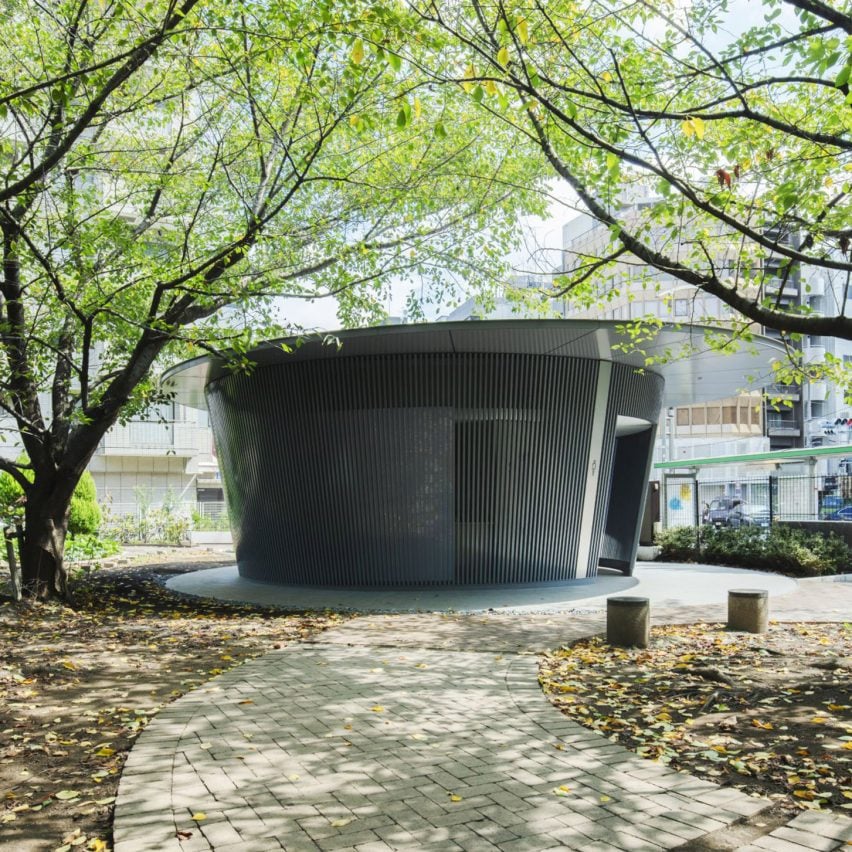
Amayadori, Jingu-Dori Park, by Tadao Ando
Pritzker Prize-winning architect Ando wrapped this circular public toilet in a wall made from vertical metal louvres, which allow for privacy but also air circulation.
An angled, overhanging roof shelters the multi-cubicled structure that is nestled among cherry trees in the city's Jingu-Dori Park.
"It was vital for me to make a space that was comfortable and safe," explained Ando, who called the toilet Amayadori – meaning rain shelter in Japanese.
Find out more about Amayadori ›
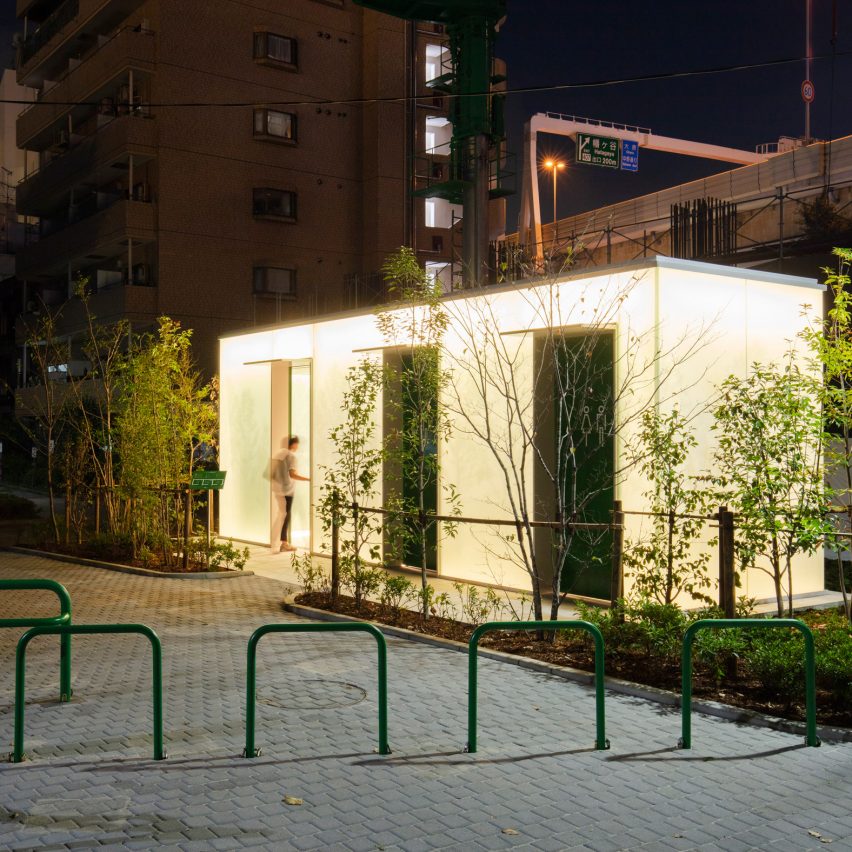
Andon, Nishihara Itchome Park, by Takenosuke Sakakura
Three unisex toilets that glow after dark were designed by architect Takenosuke Sakakura, who also imprinted tree patterns on the structures' frosted glass facades.
Named Andon after the Japanese word for lantern, the block was created to provide safe and inviting facilities for nighttime users and "improve the image of not only the restroom but the entire park," said Sakakura.
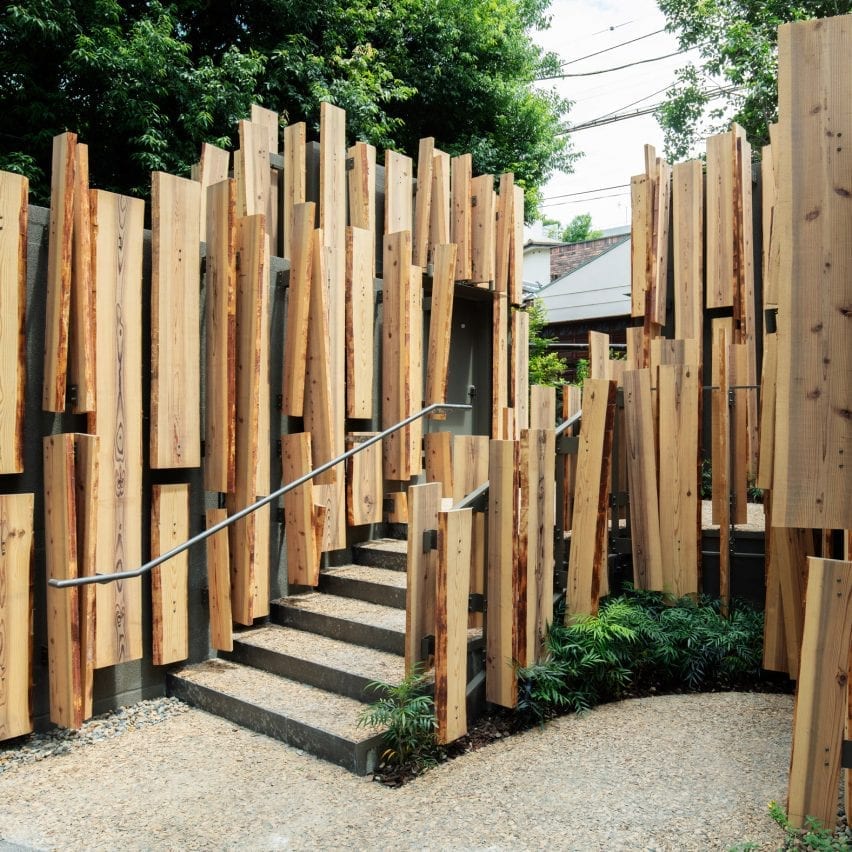
A Walk in the Woods, Nabeshima Shoto Park, by Kengo Kuma
A Walk in the Woods is a cedar-clad public restroom designed by architect Kuma to blend with its park surroundings.
Connected by a stepped walkway, the toilet is split into five individual huts that were created to accommodate the needs of "a diverse range of people," according to Kuma.
Find out more about A Walk in the Woods ›
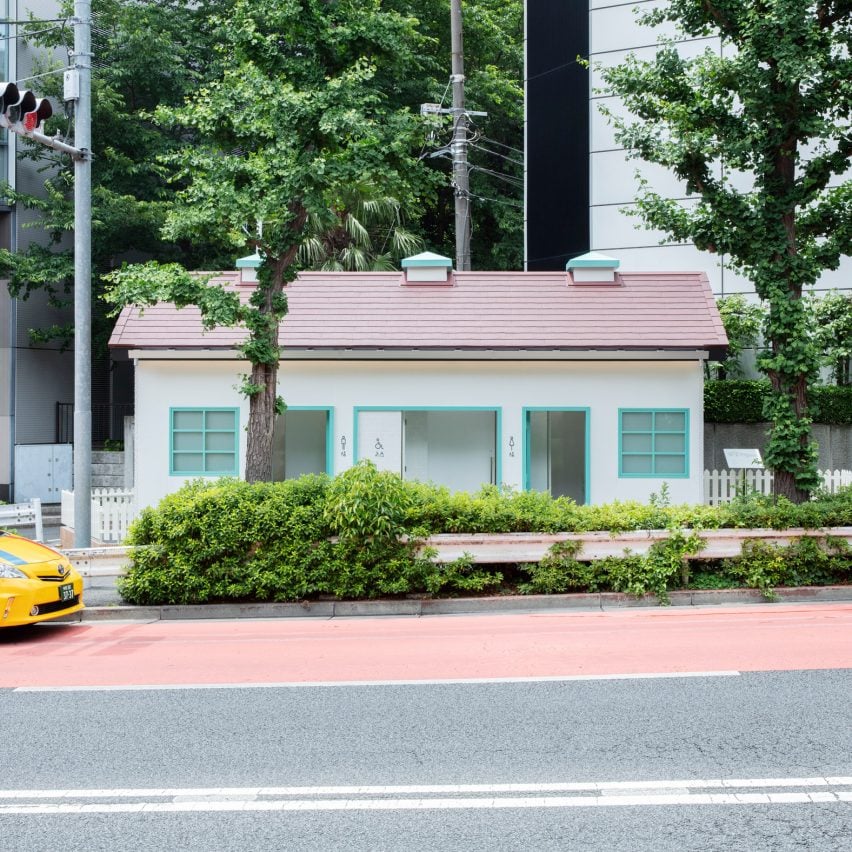
Sandwiched between high-rise buildings, this public toilet was created by fashion designer Nigo to stand out.
The playful restroom was made in the shape of a small house with a red-pitched roof, blue-framed windows and three chimney-style elements.
Partly surrounded by a white picket fence, the toilet design takes cues from a former Tokyo housing development constructed by the United States Armed Forces after the second world war.
Find out more about this toilet ›
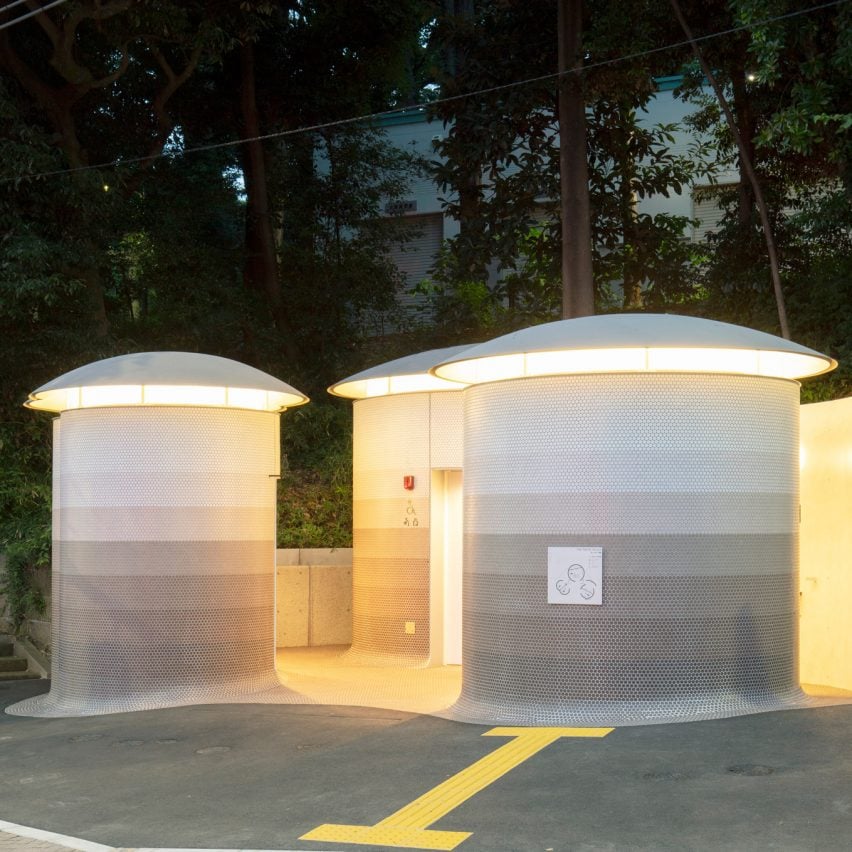
Toilet, Yoyogi-Hachiman, by Toyo Ito
A trio of mushroom-like toilets form Pritzker Prize-winning architect Toyo Ito's contribution to the city-wide project.
The facility, which replaced a former toilet block positioned at the bottom of a flight of steps leading up to the Shibuya district's Yoyogi Hachimangu shrine, references mushrooms that grow in the nearby forest.
Ito broke the toilets into three separate spaces to try and make the facility a safe place for all of its users.
Find out more about this toilet ›
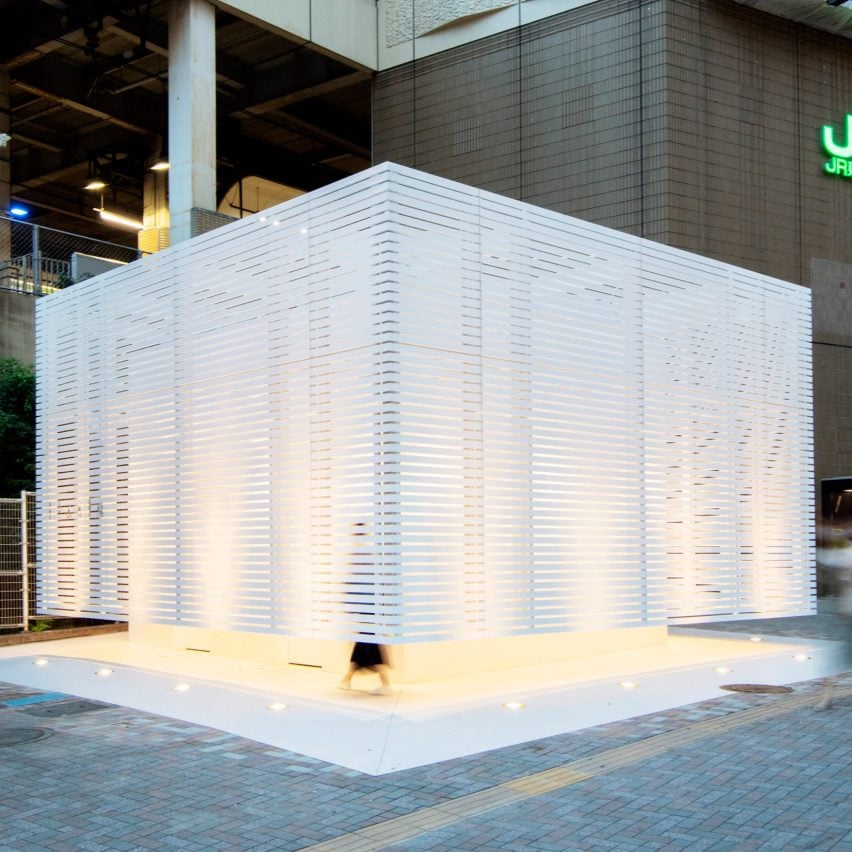
Toilet, Ebusi Station, by Kashiwa Sato
Graphic designer Kashiwa Sato, who created the brand strategy for Japanese clothing retailer Uniqlo, constructed this boxy toilet from white aluminium louvres.
Five toilet blocks, which were not delineated by gender, were inserted into the bright and clean-looking facility. The toilet was positioned outside Tokyo's bustling Ebusi Station as a "neighbourhood symbol," explained Sato.
Find out more about this toilet ›
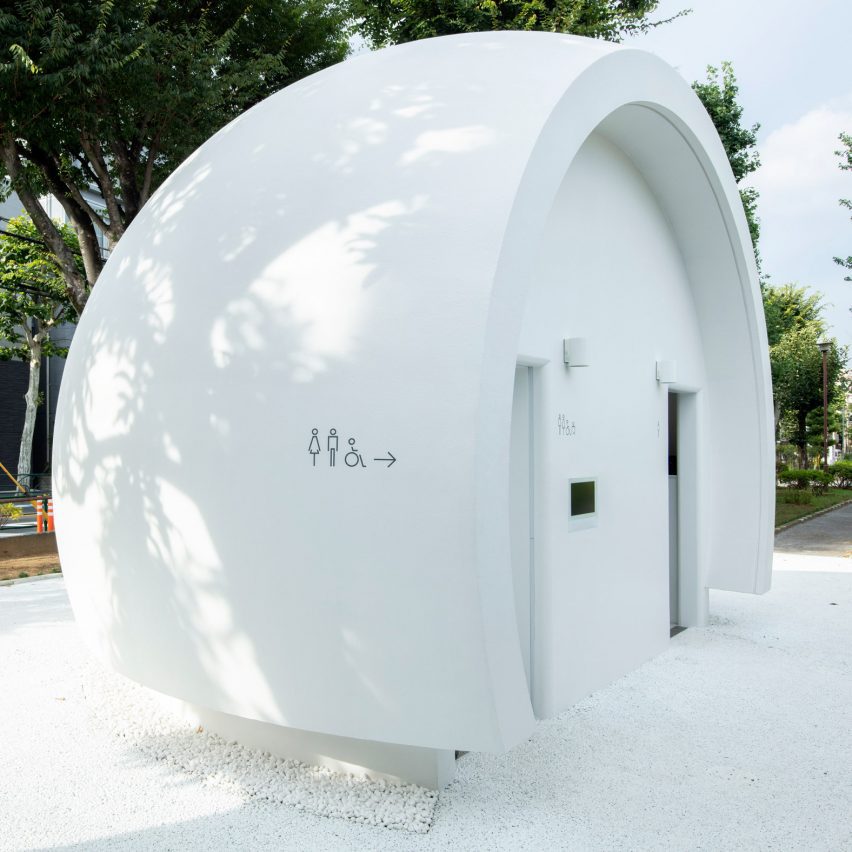
Hi Toilet, Nanago Dori Park, by Kazoo Sato
Voice commands control functions including the door, toilet flush, taps and ambient music within designer Kazoo Sato's hemispherical white toilet in Nanago Dori Park.
Sato designed the Hi Toilet to challenge the stereotype of dark and unhygienic public restrooms. Featuring an accessible toilet and urinals, the facility features a hemispherical form that was chosen to enhance internal airflow.
Find out more about Hi Toilet ›
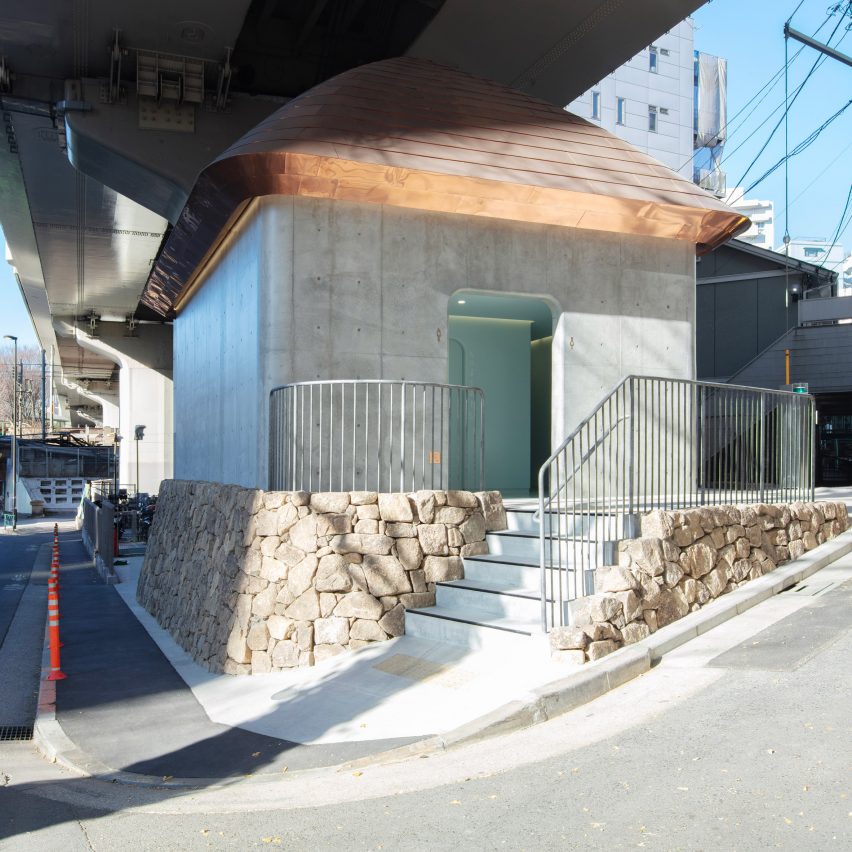
Toilet, Urasando, by Marc Newson
Industrial designer Marc Newson was informed by historic Japanese temples and tea rooms when creating this facility with a traditionally shaped copper roof.
Newson's "trustworthy and honest" concrete design features men's and women's toilets placed on either side of a central disabled toilet and is located under a raised highway to the north of Yoyogi Park.
Find out more about this toilet ›
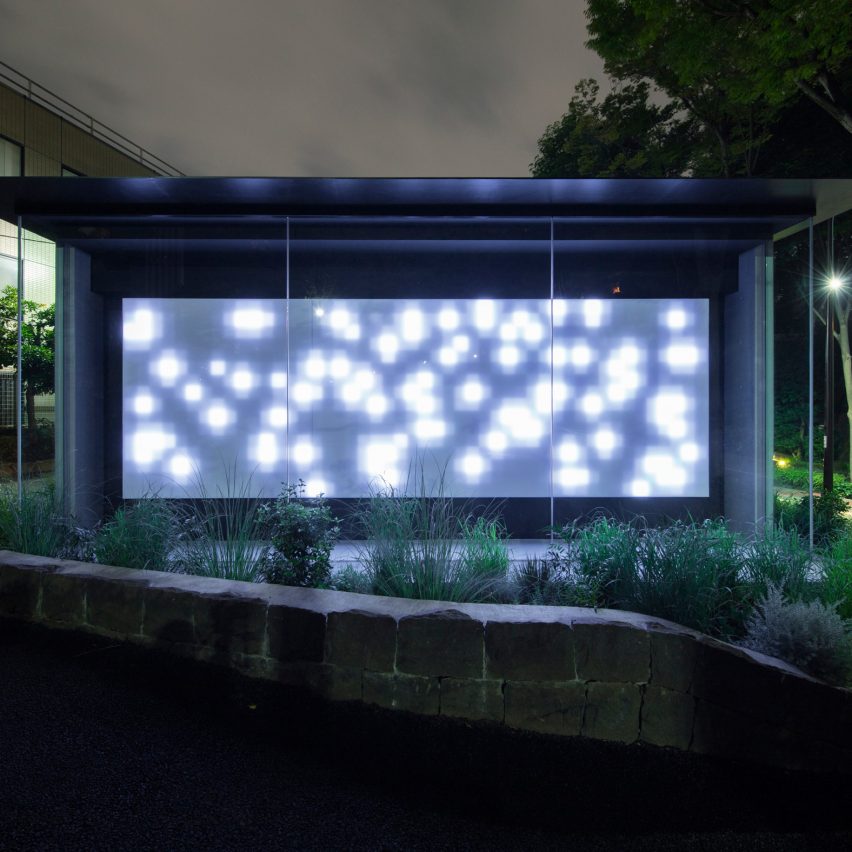
Toilet, Hiroo East Park, by Tomohito Ushiro
A large light panel features on the facade of this toilet, which displays 7.9 billion different light patterns referencing the world's population at the point the project was conceived.
Created by graphic designer Tomohito Ushiro, the rectilinear restroom contains two square unisex toilet cubicles with baby chairs and changing stations. Ushiro envisaged the structure to be "a piece of public art".
Find out more about this toilet ›
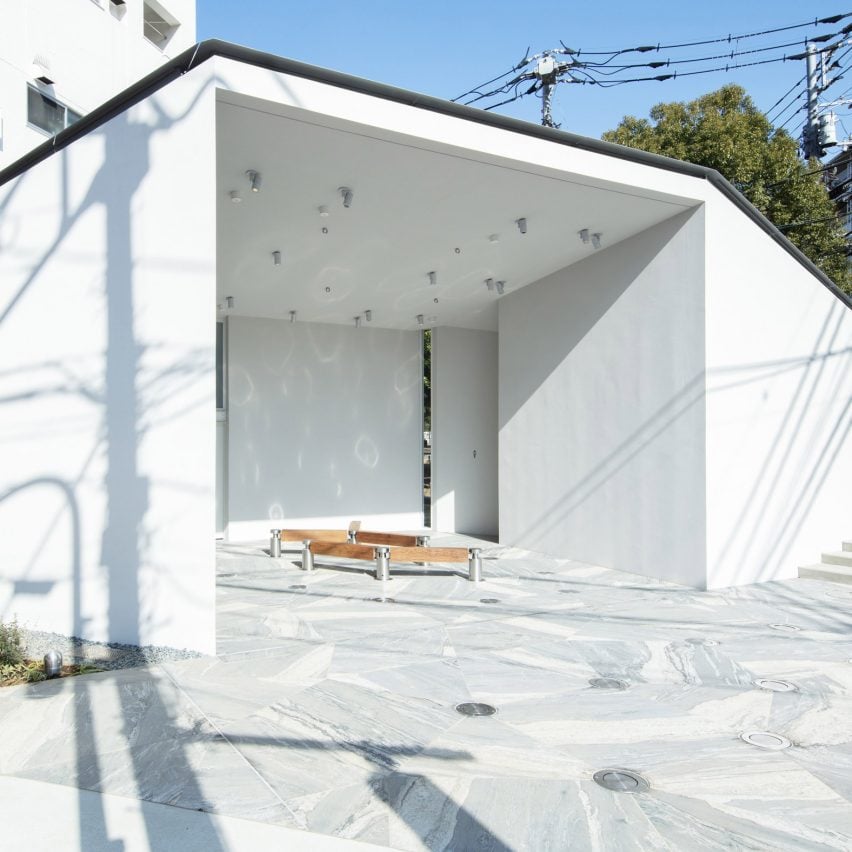
Toilet, Hatagaya, by Miles Pennington and DLX Design Lab
Designer Miles Pennington and the University of Tokyo's DLX Design Lab collaborated to create a toilet that can be used as an exhibition space, cinema, pop-up kiosk, information centre or public meeting place.
A male toilet and unisex cubicles were arranged around a large covered area. Within the block, there are expansive white walls designed to hang artworks or have films projected onto them.
"This is a community space that happens to have toilets too," said Pennington, who is a professor of design-led innovation at the university.
Find out more about this toilet ›
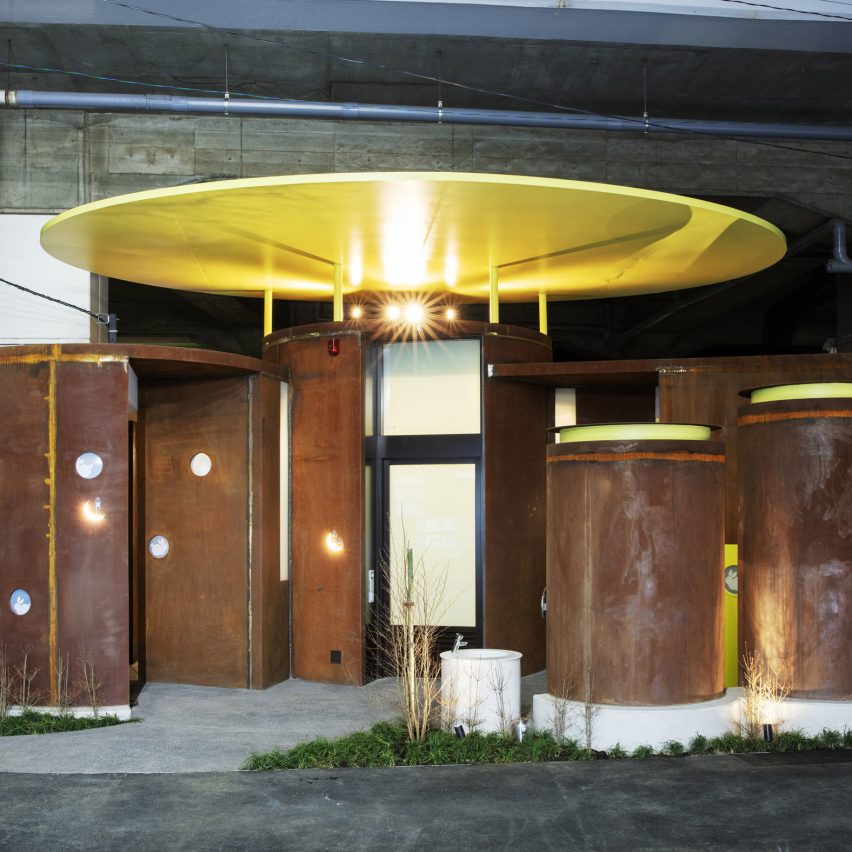
Toilet, Sasazuka Greenway, by Junko Kobayashi
Weathering steel cylinders form specialist toilet designer Junko Kobayashi's contribution to the project, which was topped with a bright yellow disc.
Set underneath the Sasazuka metro station in the city centre, the structure features various cubicles for men, women and children with a series of round holes cut into them revealing graphics of bunnies.
Find out more about this toilet ›
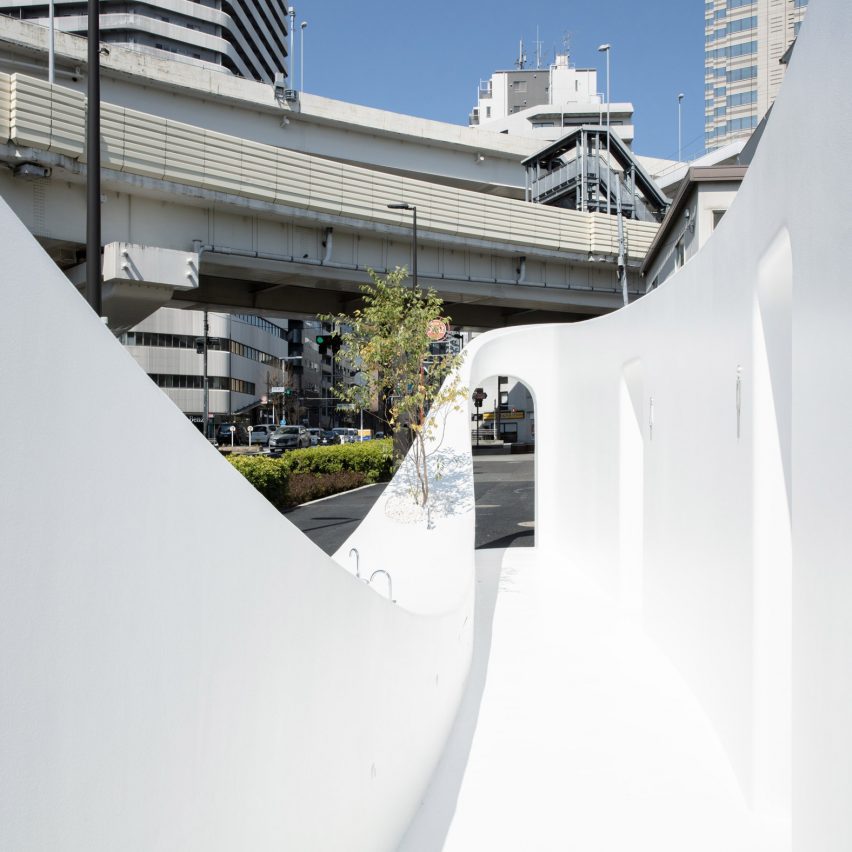
Toilet, Nishisando, by Sou Fujimoto
Architect Sou Fujimoto designed the final instalment of the Tokyo Toilet project in the city's downtown area.
Characterised by an elongated communal handwashing area with different height taps, the all-white facility's sinuous curves were created to resemble an oversized sink.
Fujimoto's structure contains toilets for men, women and children that are connected by an open-air corridor so that "everyone from children to older people can wash their hands within this vessel," said the architect.
Find out more about this toilet ›
The photography is by Satoshi Nagare, courtesy of The Nippon Foundation.